Django vs Flask: Which Is Better for Web Development

Navigating the difference between Flask and Django can be intricate. At DjangoStars, we have a strong foundation in Python web development, especially with the Django framework. Our hands-on experience uniquely equips us to walk you through these distinctions.
I’ll shed light on these two frameworks Django REST API rest framework vs Flask. Whether you’re a budding startup or a seasoned developer, this guide will provide valuable insights to aid your decision-making.
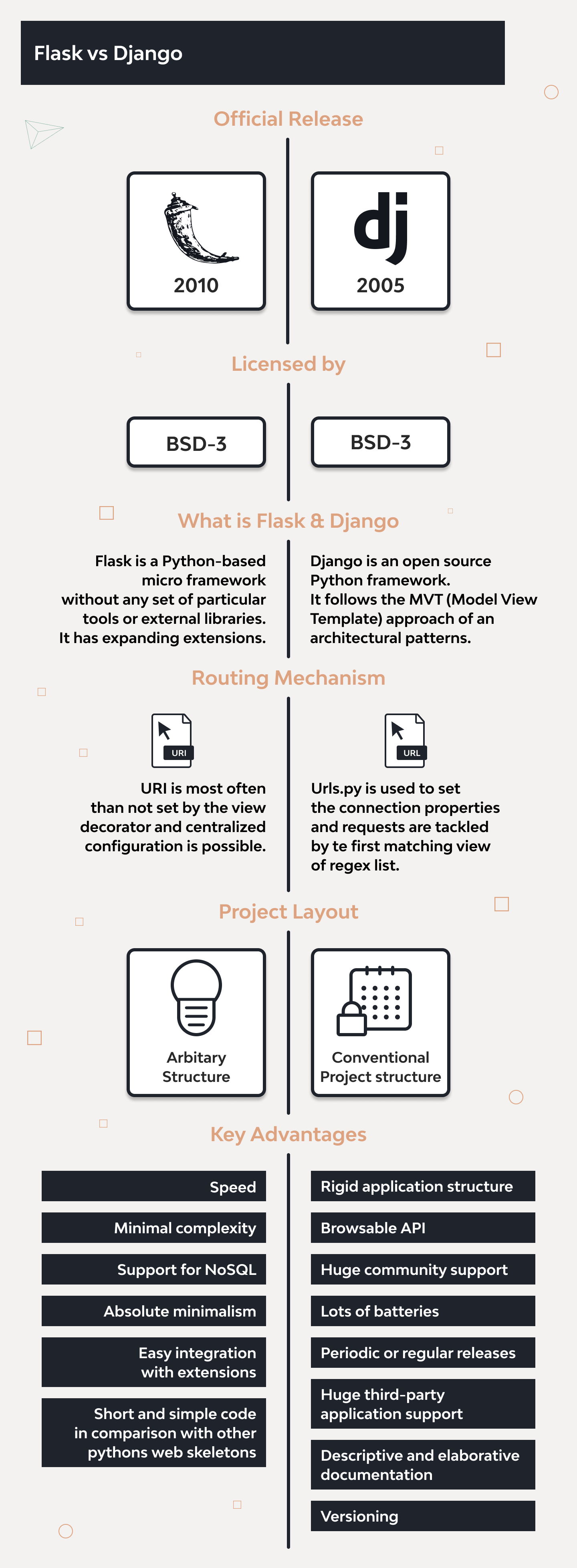
Flask vs. Django: Overview
Flask and Django hold significant positions, each catering to particular preferences and project demands.
Flask:
Flask proudly wears its “micro-framework” badge. From my experience, its “micro” aspect truly shines when a project demands a lightweight and customizable framework. You start with the basics – URL routing and HTTP request handling. And you build upon it.
It’s like a customizable car where you decide on the add-ons. For projects where you might need a tailored touch or a lean API, Flask is a good option. You can ramp up its capabilities with extensions like SQLAlchemy and Jinja2.
Django:
Django offers a full-fledged environment out of the box. It’s like receiving a fully loaded tech SUV equipped with all the modern amenities. The “batteries-included” philosophy ensures you rarely find yourself hunting for third-party packages.
Integrated ORM, a pre-built admin panel, and a systematic structure are Django’s strong suits. Whenever I’ve been part of larger projects or needed to quickly scale, Django’s structured and comprehensive setup has been invaluable.
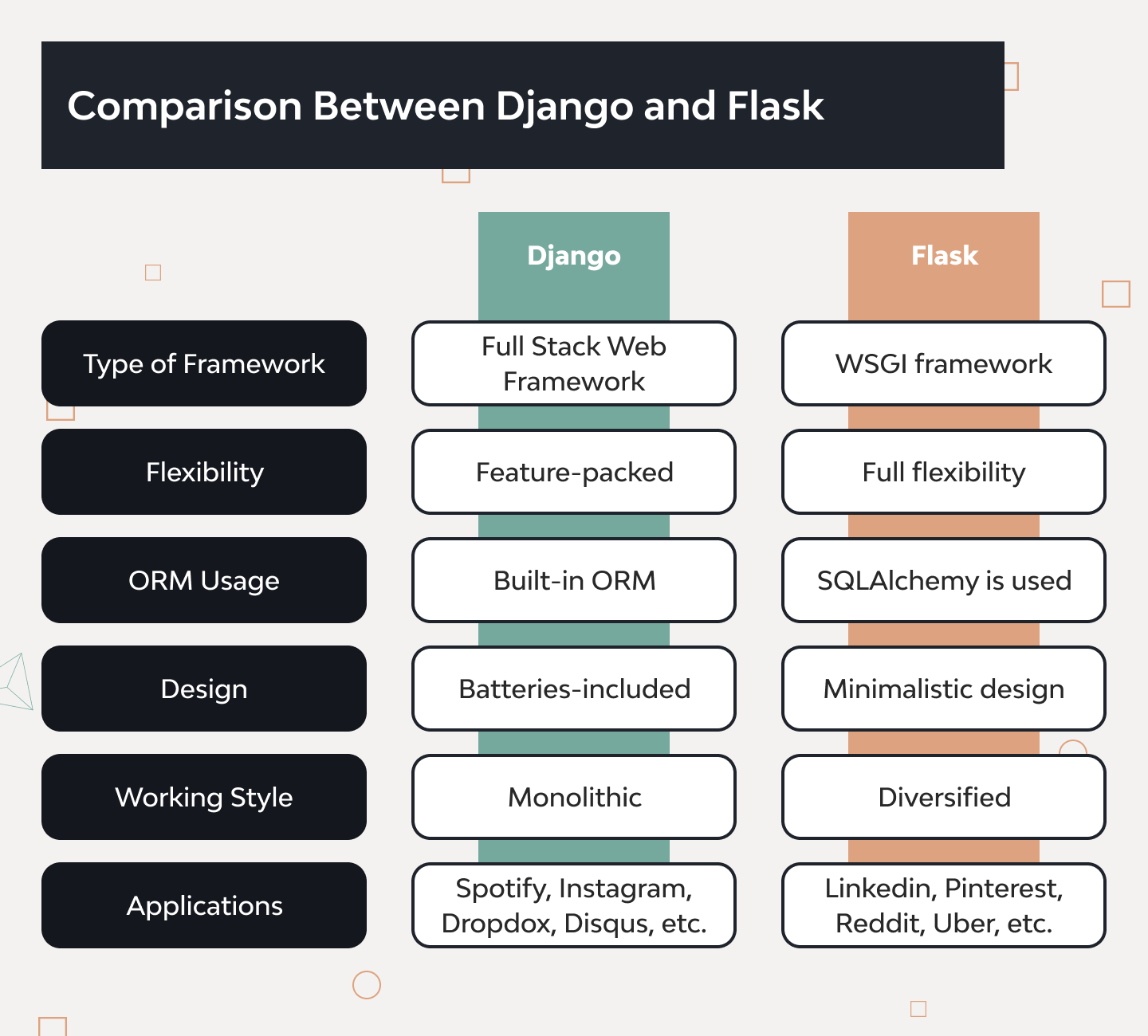
Flask vs Django: Pros and Cons
We benefit from examining strengths and associated real-world projects. Here’s a side-by-side comparison.
Flask Pros:
- Lightweight & Flexible: Perfect for simpler projects. Startups like Pallets started their journey with Flask due to its straightforwardness and adaptability.
- Customizable: No fixed structure lets you architect the application the way you see fit. Microservices in Netflix’s vast ecosystem have benefited from Flask’s customization options.
- Extensions: An ecosystem rich in extensions means adaptability. LinkedIn’s after-call tool used Flask alongside extensions like SQLAlchemy for tailored functionalities.
- Learning Curve: Flask has been the choice for many educational platforms and coding boot camps as the introductory framework for web development.
Flask Cons:
- Less Out-of-the-box: More manual configuration can sometimes slow down the initial development phase.
- Scalability: More groundwork is often required for colossal applications.
- Community: It’s smaller in comparison to Django, which can sometimes be a limitation in niche scenarios.
Django Pros:
- Comprehensive: Its “batteries-included” philosophy is exemplified by platforms like Instagram, which utilizes Django’s tools for rapid scaling.
- Structured: The likes of Mozilla benefit from Django’s structured approach for uniformity and adherence to head-to-head practices across projects.
- Integrated ORM: Platforms like Pinterest leveraged Django’s ORM capabilities for efficient and streamlined database operations.
- Community & Plugins: A massive community implies a wealth of plugins and prompt solutions. Disqus, one of the most extensive discussion platforms, tapped into this advantage to handle vast amounts of data and user interactions.
Django Cons:
- Steep Learning Curve: Newcomers might take a while to navigate through its vast offerings.
- Less Flexible: Its defined structure can sometimes be a bottleneck for out-of-the-box applications.
- Heavier: For lightweight apps, using Django might be likened to using a sledgehammer to crack a nut.
Flask Framework vs Django: Key Features
Exploring the core features of Flask and Django sheds light on their individual capabilities and the scenarios where each shines.
Flask Features:
Modularity and Flexibility
Flask is designed around the concept of modularity. You can plug in only the components you need, ensuring a lightweight application. This is beneficial for services that require a bespoke selection of tools, like tailored APIs or specialized microservices.
Real Example: Monzo, a digital bank, uses Flask for certain backend services where modularity and lightweight design are critical.
Extension-rich Environment
Flask provides a minimalist core. Its real power lies in its extensions, from authentication mechanisms to database integrations.
Real Example: Airbnb employs Flask for some of its services and makes extensive use of Flask extensions for enhanced functionality.
RESTful Request Dispatching
Flask’s built-in capabilities make creating RESTful services straightforward. This facilitates the creation of interfaces that communicate with other services or databases.
Real Example: Zalando (a European e-commerce giant) uses Flask to build RESTful APIs, allowing seamless integration with other parts of their full stack.
Jinja2 Templating
While Flask itself is non-prescriptive about how you handle front-end content. It integrates seamlessly with Jinja2 enabling dynamic content generation.
Real Example: Many smaller startups like Hasura leverage Jinja2 with Flask for rapid prototyping and dynamic content rendering.
Django Features:
Integrated ORM
Django’s ORM (Object-Relational Mapping) is one of its crown jewels. It abstracts database operations. It allows developers to interact with databases using Python instead of SQL. This streamlines database operations.
Real Example: Eventbrite uses Django’s ORM for its event management platform to simplify complex database interactions.
Admin Interface
Django provides an out-of-the-box admin interface. It’s a massive time-saver. This interface facilitates content management, user management, and more.
Real Example: The Washington Post uses Django’s admin panel for content management, enabling journalists to publish and manage content seamlessly.
Middleware Support
Middleware components in Django process requests and responses before views. It’s useful for functionalities like authentication, caching, or content modification.
Real Example: Hackernoon (a technology publishing platform) employs Django middleware for various tasks, including content customization and user authentication.
High-level MVT Architecture
Django uses the Model-View-Template (MVT) pattern, a variant of the popular Model-View-Controller (MVC). This provides a clean separation of concerns, making development and maintenance more organized.
Real Example: Bitbucket, a web-based version control repository, utilizes Django’s MVT structure to keep its vast codebase modular and maintainable.
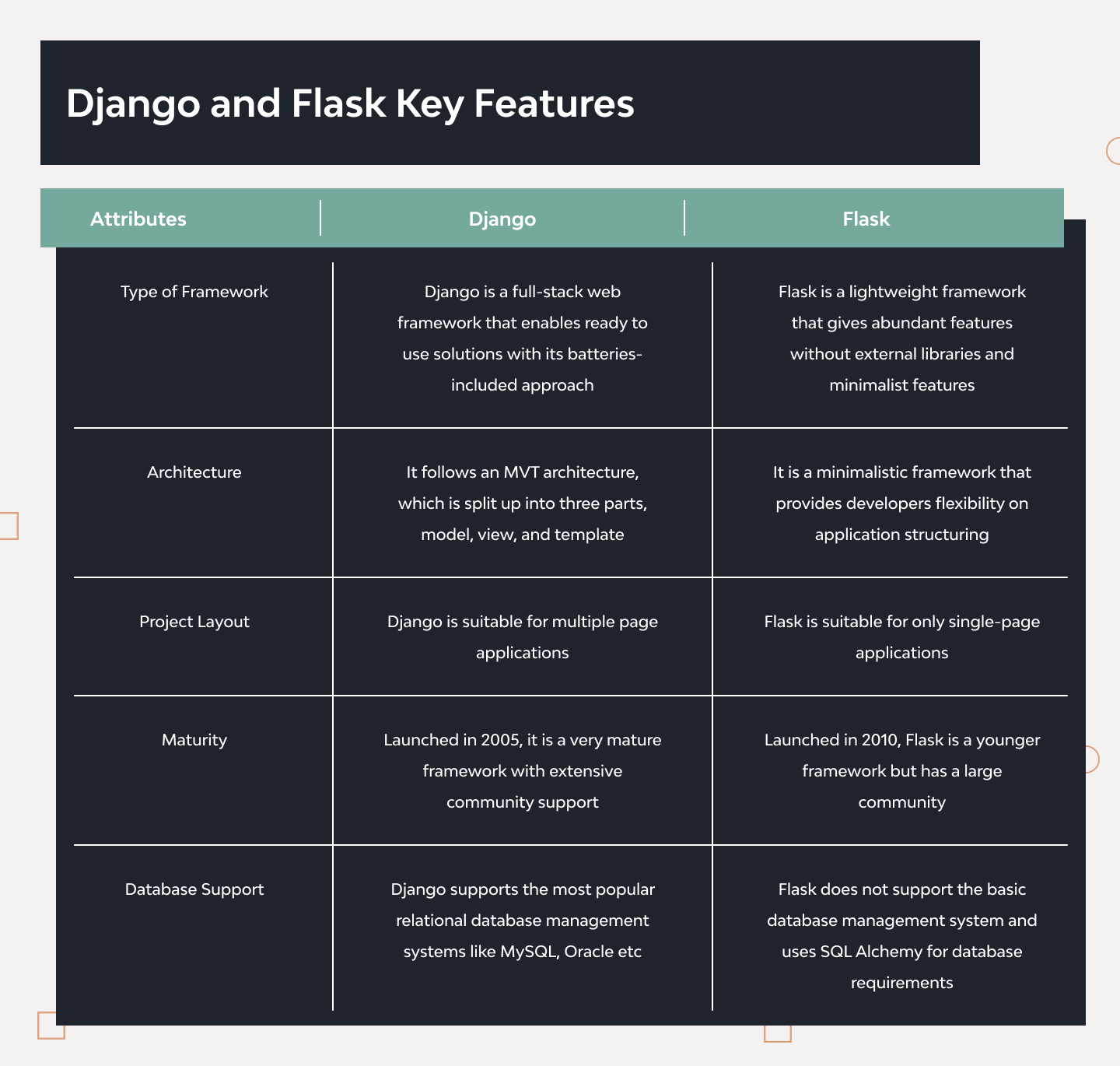
Django vs Flask: Performance Comparison
Flask and Django cater to diverse scenarios and workloads thanks to their architectures and usage patterns.
Synchronous Roots with Asynchronous Forays
Both Flask and Django were designed for synchronous operations. However, as the web evolved, so did these frameworks. Flask has extensions like Flask-Asyncio that allow for asynchronous request handlers, while Django has asynchronous views and database queries.
Read Also: Python/Django AsyncIO Tutorial with Examples
Benchmarking Challenges
The direct performance difference between Flask and Django isn’t always apples-to-apples. While returning “Hello World” might indicate basic responsiveness, real-world applications involve intricate scenarios, database interactions, user authentication, and more. For instance, popular sites like Pinterest have leveraged Django’s scalability, while Flask powers sizable applications like LinkedIn’s “Now” platform.
Database Interactions
A lot of Flask vs Django performance bottlenecks emerge during database interactions. Django’s built-in ORM is renowned for its optimization, especially with complex relational databases. Flask’s compatibility with SQLAlchemy and other ORMs allows for greater flexibility. It’s especially for non-relational databases or custom query optimizations. like Airbnb or Dropbox are large-scale applications with intricate database needs and they rely on SQLAlchemy.
Custom Code and Framework Code
Flask’s “micro” nature can demand more custom or third-party code. In contrast, Django’s comprehensive suite might yield better results out of the box, especially for conventional applications.
Real-World Observations
In scenarios with high I/O operations, Flask, when coupled with an asynchronous library, can sometimes edge out Django. However, Django’s structured approach and its “batteries-included” philosophy tend to shine in large-scale applications that benefit from uniformity, rapid development cycles, and built-in optimizations.

Django vs Flask: Similarities
In the sprawling ecosystem of Python web development, Django vs Flask often come up as standout frameworks, each with its distinct merits. Despite their differences, they also share a set of commonalities that underpin their popularity and broad acceptance. Here’s a closer look at those shared characteristics.
1. Python-Based
Python web framework Flask vs Django is at its core. This ensures that developers can leverage the simplicity, readability, and vast ecosystem of Python libraries and tools in either framework.
2. MVC Architecture.
Both frameworks follow the Model-View-Controller (MVC) architecture. Django follows this more implicitly, often referred to as the Model-View-Template (MVT) approach. Flask provides flexibility for developers to structure their apps as they see fit, but MVC remains a popular choice.
3. WSGI Compliant.
Both Flask and Django adhere to the Web Server Gateway Interface (WSGI) standard. This means they can operate with any WSGI-compliant web server, ensuring compatibility and ease of deployment.
4. Templating Engine.
Jinja2 is the default templating engine for Flask, and Django comes with its own built-in templating system. Though each has its syntax, the underlying concept is consistent. Dynamic content generation is based on context.
5. Extendability.
Extensions and middleware are pivotal for both frameworks. Flask thrives on extensions to add functionalities, from authentication to database management. Django’s middleware system allows developers to process requests and responses globally before reaching the view.
6. ORM Support.
Django has its built-in Object-Relational Mapping (ORM) system. Flask typically leans on SQLAlchemy. However, the core idea is the same: abstracting database operations and providing a higher-level, Pythonic API to interact with persisted data.
7. Development Server.
Both frameworks come equipped with lightweight development servers. While these aren’t suitable for production, they’re invaluable for local development, debugging, and testing.
8. Community and Documentation.
Both Flask and Django boast extensive documentation, tutorials, and a large, active community that contributes plugins, answers queries, and ensures the framework’s evolution.
Flask and Django share a common foundation and a set of best practices that have helped them emerge as top choices in the Python web development world.
Flask vs Django: Use Cases and Project Suitability
The Python ecosystem offers a myriad of tools for developers. Understanding their ideal use cases can guide developers to make informed decisions about their project needs. We’ll dive into the typical projects suited for each framework and illustrate them with real-world scenarios.
Flask: Best Suited for…
- Small to Medium-Sized Web Applications:
- A blog website, personal portfolios, or an MVP for a startup can be rapidly prototyped and launched with Flask.
- Microservices Architecture:
- Netflix uses Flask for its microservices. Flask’s lightweight nature is perfect for services that have singular, defined tasks, ensuring scalability and maintainability.
- Custom Solutions:
- When a project requires a unique configuration or a non-traditional approach, Flask gives the flexibility to integrate only the required components.
- Flask allows companies to create tailor-made internal tools or platforms that don’t necessarily fit conventional structures.
- APIs and Backend Services:
- Many tech startups utilize Flask to build RESTful APIs due to its simplicity and performance. Pinterest’s API, for instance, was initially built using Flask.
Django: Best Suited for…
- Large-Scale Web App:
- Platforms like Instagram and Mozilla have employed Django to handle massive user bases and data operations.
- Applications with Extensive Features:
- Django’s “batteries-included” philosophy ensures that developers have secure tools for most requirements, like authentication, admin interfaces, and more.
- Disqus, a global comment hosting service, leveraged Django’s extensive feature set to rapidly roll out features without reinventing the wheel.
- E-Commerce Sites:
- Saleor, a rapidly growing open-source e-commerce platform, is built on Django, capitalizing on its ORM and security features to handle transactions and user data.
- Content Management Systems (CMS):
- Wagtail, a popular open-source CMS, is Django-based, benefiting from its rich admin interface and modular approach to content management.
- Applications Requiring Rapid Development:
- Django’s convention-over-configuration paradigm speeds up development. Projects with tight deadlines can achieve faster time-to-market.
- The Washington Post utilized Django to rapidly develop and adapt to the evolving digital news landscape.
While both Flask and Django are capable across various projects, Flask often thrives where customization and modularity are paramount. In contrast, Django’s comprehensive toolkit makes it a go-to for extensible, feature-rich applications. The choice between the two often boils down to project scope, required features, and the desired development approach.
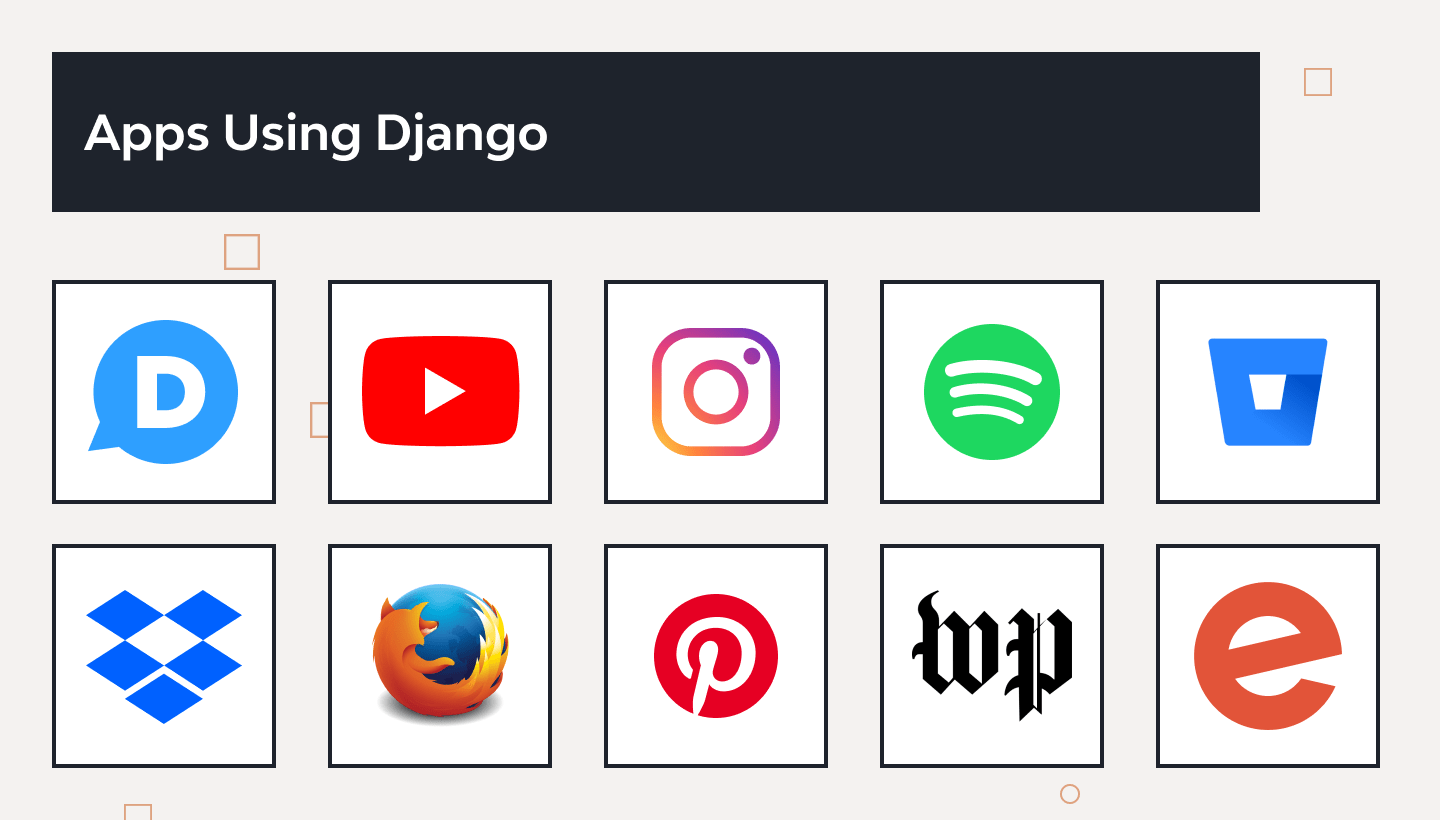
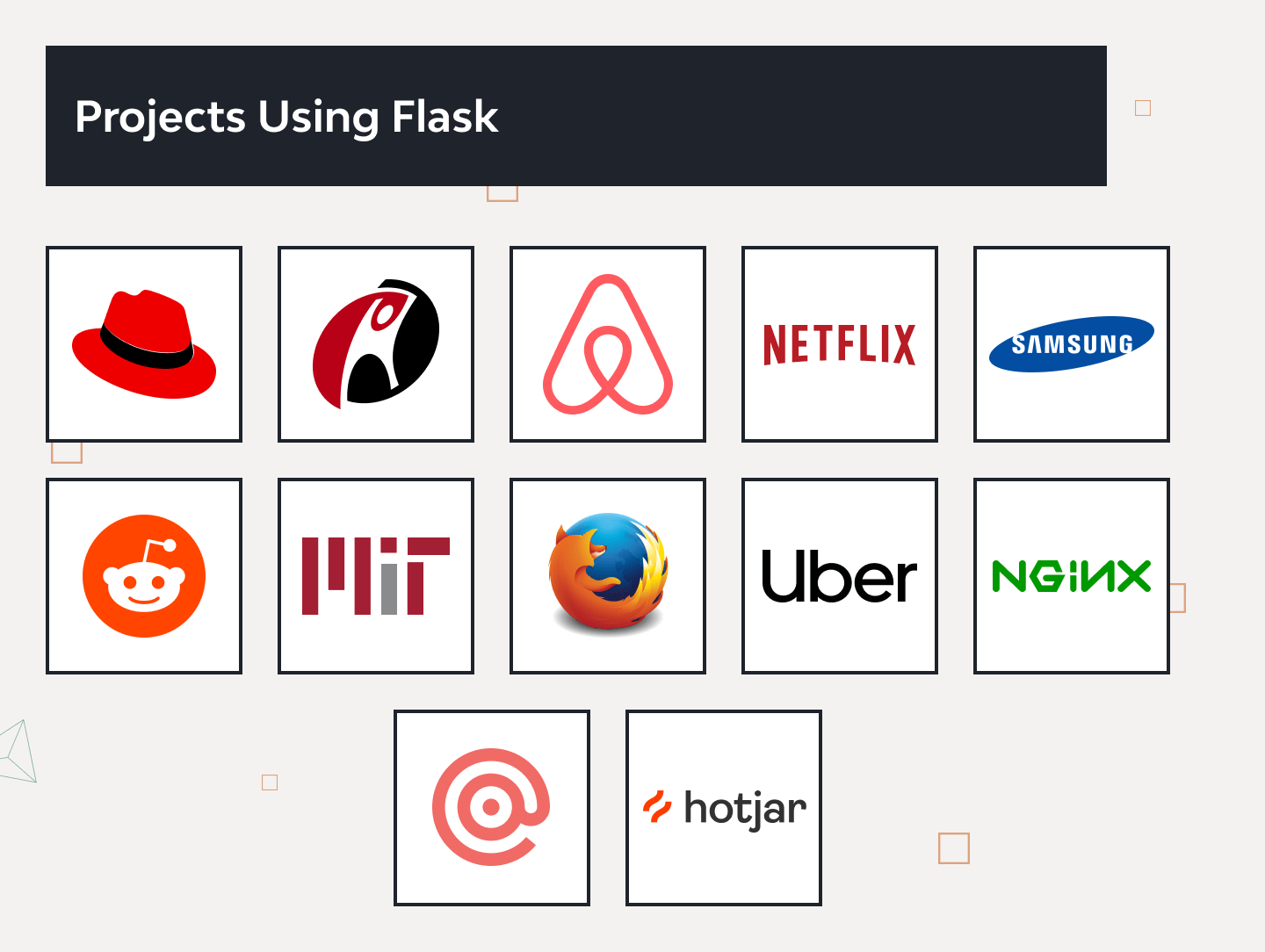
Flask vs. Django: Navigating Their Communities
The heartbeat of any open-source software framework is its community. An engaged community provides essential technical support. It also fosters collaboration, innovation, and networking opportunities.
Flask
Where to Find & How to Join:
- Official Documentation: Start here for the basics and best practices.
- Pallets Community: Engage with other Flask enthusiasts on Pallets.
- Stack Overflow: A quick search for ‘Flask’ will yield thousands of discussions. Just create an account to start participating.
- Mailing List: Join the Flask mailing list for deeper dives into topics.
- Local Communities: Many cities have local Flask user groups. Sites like Meetup.com often list such gatherings.
What You Get:
- Answers to technical queries.
- Networking opportunities with like-minded developers.
- A platform to share or collaborate on projects.
Django
Where to Find & How to Join:
- Official Documentation: Start here to immerse yourself in Django.
- Django Users Mailing List: Connect with both newbies and pros here.
- Stack Overflow: Searching ‘Django’ will give you a plethora of discussions. Simply create an account to engage.
- Django Forum: This official platform is an excellent space for all things Django.
- Local Communities: Check platforms like Meetup.com for local Django-centric events or workshops in your city.
- Country-Level Conferences: Such as DjangoCon USA, which attracts a large audience from across the nation.
- Continent-Level Conferences: DjangoCon Europe, where you can meet Django enthusiasts from various European countries.
What You Get:
- Assistance with intricate Django-related issues.
- Opportunities to collaborate on projects or plugins.
- Chance to network with experienced Django developers.
Well-known Broader Communities:
- GitHub: Almost every major framework, including Flask and Django, has its repository here. Engaging in issues or pull requests can be the next way to contribute and network.
- Reddit: Subreddits like r/Flask and r/django are buzzing with daily discussions.
- Meetup: A hub for local tech meetups, including framework-specific gatherings.
Django Development Services for Your Business.<br /> <small>Optimize Performance, Enhance Security, and Scale Effortlessly</small>
Decision-Making: Flask vs. Django
When talking about Python web development, Flask and Django usually pop up. They’ve both made a mark in the developer world and here’s a straightforward dive into what they bring to the table. Django vs Flask – which is better?
Flask:
The cool thing about Flask is its flexibility. You start small and add on as you go. For example, are you building a blog or a small web application? Flask has got you. If you want to spice things up, there’s SQLAlchemy for databases, Jinja2 for designs, and Werkzeug for utilities. This makes it great for projects that need a customized touch or are still figuring things out.
Django:
A standout point for Django is its structure. It has a set way of doing things, which is excellent when you have a big team or project. Everyone follows the same playbook, making development smooth and predictable.
DjangoStars as Your Python Django Development Partner
DjangoStars stands out as a pioneer in Python Django development services. With a wealth of expertise under our belt, we’ve carved a niche in crafting tailor-made solutions for clients across diverse sectors.
Our experience spans over a decade, during which we’ve tackled projects of varying complexities, ranging from simple web apps to extensive enterprise-level systems. Our dedicated team, armed with in-depth knowledge of Django, ensures that every project we undertake is delivered with precision and excellence.
Conclusion
Flask restful vs Django REST framework – how to make a choice? Think about your project. Flask gives room to experiment and gradually build, while Django’s got a full set from the start. Both have their strengths, and your project’s needs will point you in the right direction.
- Which framework is better for large and complex applications, Django or Flask?
- Django has a "batteries-included" philosophy. It is typically favored for larger, more complex projects due to its comprehensive toolkit and in-built features.
- Can I build RESTful APIs with both Flask and Django?
- Yes, both frameworks support building RESTful APIs. While Flask often uses extensions like Flask-RESTful, Django has the Django Rest Framework (DRF) which is quite popular.
- Can I use Flask and Django together in a project?
- While it's technically possible, it's not common practice and can lead to complexities. I would choose a primary framework based on the project's needs.
- Which framework is better to develop data-intensive apps?
- Django's integrated ORM and support for various databases make it a strong choice for data-intensive applications. Flask can also be equipped to handle such projects with the right extensions.
- How do Flask and Django fare in terms of community support?
- Both Flask and Django boast strong, active communities. Django, being older, has a slightly larger community, but Flask has seen rapid growth and adoption in recent years. Both communities offer extensive resources, tutorials, and support channels.









